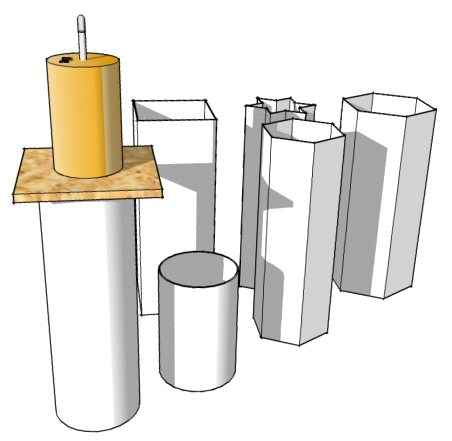Supporting Pillars
From DT Online
Single span bridges have supports, or abutments, at each end. Longer crossings often need piers or pillars to create multi-span bridges. These additional supports carry the compressive loads on the spans in between the end abutments. Materials which are used have to be strong in compression. Stone or brick masonry and cast iron was often used but more modern bridges tend to use steel or reinforced concrete.
Try making models of pillars each one using a single sheet of A4 thin card or paper and tape or glue the ends together. Place a small square of thick card or board on top of each one then add weight until it collapses. Observe what happens.
- How did each pillar collapse?
- Did the pillar bend or twist as it failed?
- Which shape of pillar seems to be strongest?
- Were tall pillars or short pillars best?
- Were narrow pillars or wide pillars best?
Try filling your winning design with sand or marbles - does this make it even stronger?
You may discover that a cylinder is the best shape because it has no corners to concentrate forces so the load is spread evenly and less likely to buckle. By filling the cylinder you are making it even stiffer, which also enables it to resist buckling.
